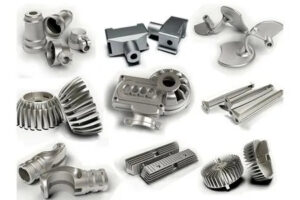Automotive die casting
 Automotive die casting is a manufacturing process that is widely used in the automotive industry to produce high-quality components. This process involves the use of molten metal, which is injected into a die or mold to create a specific shape. This technique is highly efficient, cost-effective, and enables manufacturers to produce components with high dimensional accuracy and consistency.
Automotive die casting is a manufacturing process that is widely used in the automotive industry to produce high-quality components. This process involves the use of molten metal, which is injected into a die or mold to create a specific shape. This technique is highly efficient, cost-effective, and enables manufacturers to produce components with high dimensional accuracy and consistency.
In this article, we will delve into the fundamentals of automotive die casting, explain its benefits, applications, and best practices.
Fundamentals:
Die casting involves the use of specialized equipment that is designed to handle high-pressure applications. The process begins with the preparation of the die or mold, which is made of high-strength steel. The mold is then preheated to a specific temperature, depending on the type of metal that will be used.
Once the mold is ready, molten metal is injected into it at high pressure, usually between 1,500 and 25,000 psi. The metal is then allowed to cool and solidify, after which the mold is opened, and the finished component is removed.
Automotive die casting Benefits:
It offers several benefits over other manufacturing techniques, including:
1. High production rates: Die casting allows for high-volume production, making it ideal for automotive component manufacturing.
2. Consistency and accuracy: Components produced via die casting exhibit high dimensional accuracy and consistency, ensuring that parts fit perfectly and function reliably.
3. Cost-effectiveness: Die casting is a cost-effective manufacturing technique, with lower material costs and shorter production times than other techniques.
Automotive die casting Applications:
It is used to produce a wide range of components, including engine parts, transmission components, and suspension parts. Some common examples include:
1. Engine blocks and cylinder heads
2. Transmission casings and gears
3. Crankshafts and camshafts
4. Suspension arms and wheel hubs
5. Brackets and supports
Best practices:
To achieve optimal results with automotive die casting, manufacturers must adhere to strict guidelines and best practices. These include:
1. Proper mold design: The mold must be designed to account for factors such as shrinkage and thermal expansion to ensure that the final component meets specifications.
2. Material selection: The right material must be selected based on the requirements of the component in question, including strength, durability, and corrosion resistance.
3. Process control: Die casting is a highly controlled process, and manufacturers must carefully monitor variables such as temperature, pressure, and injection speed to ensure consistent results.
Conclusion:
It is a highly efficient, cost-effective, and reliable manufacturing process that is widely used in the automotive industry. By adhering to best practices and using state-of-the-art equipment, manufacturers can produce high-quality components with high dimensional accuracy and consistency. As the automotive industry continues to evolve, die casting will undoubtedly play an essential role in the production of critical components.






